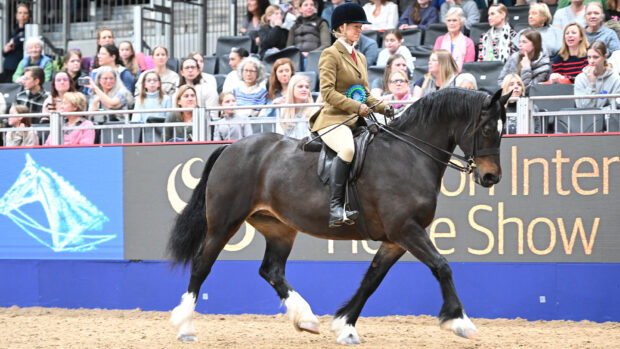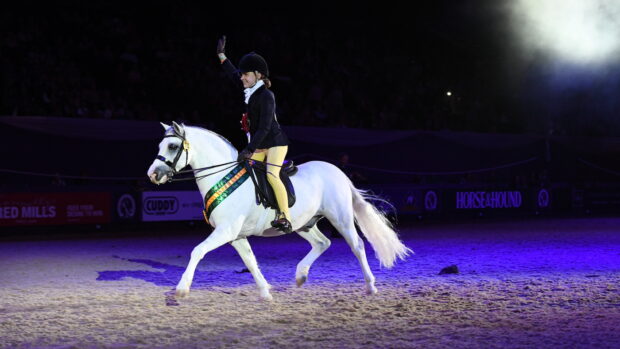What is the appeal of in-hand showing?
For professionals and breeders, in-hand showing is a shop window for their young horses, mares and stallions, and gives them a gauge of their potential.
Elaine Mann of the Arab Horse Society (AHS) says that it’s useful to hear “a judge’s opinion on your horse”.
The British Show Horse Association’s (BSHA) in-hand chairman Sarah Carey highlights that “it can be a fun project for an amateur”.
The Showing Register’s (TSR) Gail Chapman says that “it gives an opportunity for people of all ages to compete at showing”.
“In-hand showing is very suitable for amateurs and beginners because it can be less nerve-racking than riding and anyone can take part,” adds Gail.
“Many classes are open to any age, so it is a great way to carry on showing an older favourite that you may have outgrown.”
It’s also a useful grounding for any horse, to familiarise him with the rigours of travelling and the competition atmosphere, while giving his handler a goal.
How does it work?
Affiliated classes are run under the rules of the given governing body. There is usually a cost from around £30 to purchase in-hand membership, depending on the society.
For example, the BSHA runs broodmare and youngstock classes for hacks and riding horses, with judges selected from their panels, while the AHS caters for pure-bred Arabs and part-breds.
“Unaffiliated classes are run by the show, with their own rules and judges,” says Sarah. “It’s lower key.”
TSR recommends “starting at a smaller type of show to find out if you enjoy the experience”. The AHS has special amateur classes as well as open ones.
All classes at any level will be arranged according to type or breed, coloured, age and height — often with some novelty ones at local shows.
Before even entering a class, watch and learn. Watch the pros at in-hand classes to see how to show off your horse at its best.
Most classes start with competitors walking round the ring together.
Then each handler will stand the horse in front of the judge for an appraisal, before walking away and trotting back in a straight line, then showing off the paces in a longer trot along
the ring.
Competitors will be lined up in order of merit.
How should you turn your horse out?
Different classes require different turnout — for example, mountain and moorlands are unplaited, while for most other classes manes are plaited and tails pulled or plaited, so you’ll need to check out the rules or schedule for your specific type.
The BSHA says that a basic tack guide is as for a ridden test, minus the saddle — a snaffle bridle for youngstock, double bridle for broodmares and plain bridle for cobs.
Coloured browbands are often acceptable, but “too much bling” is generally discouraged. Horses and ponies should be scrupulously clean, well groomed and presented.
Handlers are expected to be neat and tidy, in a tweed jacket, light trousers, a shirt and tie, with a beagler or cap.
Gail at TSR encourages newcomers not to be deterred by the kit.
“Don’t feel you need to lay out funds on new gear,” she says.
“The judge is judging the animal, not its leader, and most people will have something suitable in their wardrobe.”
Find out more
British Show Horse Association: tel: 01773 550816; email: framptonrise@tiscali.co.uk
The Showing Register: tel: 0844 870 7392; email: theshowingregister@yahoo.co.uk
Arab Horse Society: tel: 01672 521411; email: membership@arabhorsesociety.org
Amateur Showing Society: tel: 01284 388923;email: amateurshowingsociety@hotmail.co.uk
National Pony Society: tel: 01420 88333; admin@nationalponysociety.com
This article was first published in Horse & Hound magazine (24 April 2014)




